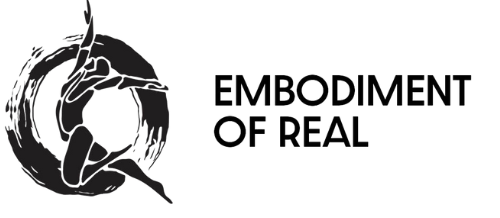About Embodiment of Real
Embodiment of Real is the educational resource offering the praxis and the theoretical paradigm aimed at enhancing the physical, energetic and mental functioning of those interested in spiritual development. The foundations of this development are transforming the body, cultivating energy, understanding the psyche, and training the mind.
Bases of Practice
- Body transformation involves mobility, strength, flexibility, coordination, martial prowess, internal connectivity, gracefulness, endurance and capacity to gain from disorder.
- Energy cultivation starts with building an interface between mind and body via attentiveness. Consolidation and mobilisation of energy follow in order to transform the body under the influence of energy. Opening the channels and maximising energy production beyond that which is acquired follows such that the body could be open and conductive for large amounts of energy.
- Enhancing the amount of energy and bodily efficiency makes default psychic functioning apparent. Hence, studying psychoanalytic theory and investigating one’s deep-rooted motivations ought to follow. This study is not aimed solely at understanding but at the liberation of one’s own desire from that of the other, such that one could pursue the path of practice. This liberation is not possible without returning a subject their capacity to love.
- All of the above requires discipline and methodology, which are afforded by training the mind in line with the nature of things, i.e., reality. Stabilising the mind’s attention on an object, developing the capacity to endure the flux of phenomena, and learning to penetrate beyond fashionings of the mind towards the Real are but a few aspects of this training.
Embodiment of Real is a non-sectarian practice of cultivation, which draws from such traditions as Theravada Buddhism, Quanzhen Daoism and Lacanian psychoanalysis.
These three traditions are employed to counterbalance each other, providing a practitioner with the praxis and the theoretical paradigm devoid of dogmatic rigidity, ritualised actions and cultural baggage.

In particular, strict methods of such renunciants’ tradition as Theravada Buddhism are excellent at training the mind yet disregard the psyche and energy. As a result, obsessive neurosis is all too common amongst those who adhere to this path alone. Lacanian psychoanalytic tenets counterbalance this focus on the mind with discernment of subjective structure, mechanisms of the unconscious and methods of work with the ‘speaking body’, which are unheard of within Buddhism.
At the same time, the sole focus of psychoanalysis on speech makes it untenable to work with the Real of the organism. Developing the body’s capacity to ‘gain from disorder’ through the arts of movement, studying the mechanisms of energetic functioning in accordance with the art of qigong and increasing the tolerance threshold with respect to that which cannot be symbolised amounts to ‘embodying’ the Real. In other words, it allows one to re-discover the Real of the body, which simultaneously cuts the root of so many symptoms having to do with the repression of the drive, non-acceptance of mortality and investment in the fantasy of sexual rapport.
Discerning the root causes of one’s psychic suffering by paying attention to and analysing one’s discontents and inconsistencies, slips of the tongue, bungled actions, contingent elements of one’s dreams and recurrent patterns in life allows for a gradual release from the determinism of one’s acquired conditioning. This enables one to enter desire non-dependent on the other and pursue one’s own goals at will. Such exhaustion of compulsion corresponds with experiencing the Real according to the modality of inertia. Simply speaking, it amounts to embracing boredom. Psychoanalytic practice stops with subjectifying the cause of one’s desire, traversing one’s fantasy, and coming to grips with the inherent lack, or dukkha, of existence. Yet, those seeking spiritual development should go beyond the normality attained thus.
At the same time, the sole focus of psychoanalysis on speech makes it untenable to work with the Real of the organism. Developing the body’s capacity to ‘gain from disorder’ through the arts of movement, studying the mechanisms of energetic functioning in accordance with the art of qigong and increasing the tolerance threshold with respect to that which cannot be symbolised amounts to ‘embodying’ the Real. In other words, it allows one to re-discover the Real of the body, which simultaneously cuts the root of so many symptoms having to do with the repression of the drive, non-acceptance of mortality and investment in the fantasy of sexual rapport.
Discerning the root causes of one’s psychic suffering by paying attention to and analysing one’s discontents and inconsistencies, slips of the tongue, bungled actions, contingent elements of one’s dreams and recurrent patterns in life allows for a gradual release from the determinism of one’s acquired conditioning. This enables one to enter desire non-dependent on the other and pursue one’s own goals at will. Such exhaustion of compulsion corresponds with experiencing the Real according to the modality of inertia. Simply speaking, it amounts to embracing boredom. Psychoanalytic practice stops with subjectifying the cause of one’s desire, traversing one’s fantasy, and coming to grips with the inherent lack, or dukkha, of existence. Yet, those seeking spiritual development should go beyond the normality attained thus.

The higher aspects of cultivation are available for those who have brought one’s acquired nature into harmony. One learns to see through the veil of worldly illusion by developing tranquillity and insight regarding the selfless nature of phenomena. By attaining absorption and cultivating peace born from cessation, one learns to harvest and circulate the light of undivided consciousness, thereby harnessing reality. If such a realised one chooses to cease the cycle of reincarnations, they can, by abandoning material or immaterial rebirth desire. If they choose to dwell as spiritual immortals, they can also nurture the golden embryo and cultivate a body outside the body. The pathways for those seeking to fully discover one’s human potential are not limited by either Earth or Heaven.
Embodiment of Real offers the paradigm of practice that is interdisciplinary, flexible, yet one-pointed in taking a subject towards the goal of cultivation, which are getting in touch with the Soul and realising the Spirit. Key aspirations of this practice are to foster endurance, develop stoic resilience in the face of difficulties, promote eclectic knowledge of mental, psychic and physical causality that is involved with spiritual cultivation, maximise the efficiency of a practitioner’s functioning, and inspire one to travel along the path of reversal, which is a hallmark of all genuine traditions aiming at reaching the Divine.
This practice will not lead a cultivator all the way to the Source. It will help to build foundations within the body, energy, psyche and mind that are necessary for the journey. Unlike personal development or therapy, Embodiment of Real is not tailored to particular problems of individuals. It takes anyone whose heart yearns for genuine knowledge and transcendence on the path of development that has classically been advised by the masters of the past. It is the path of relinquishment of identifications, the path of diligent exertion, the path of loving acceptance and the way towards truth. It is the way to touch upon and unify with that, which is Real.
This practice will not lead a cultivator all the way to the Source. It will help to build foundations within the body, energy, psyche and mind that are necessary for the journey. Unlike personal development or therapy, Embodiment of Real is not tailored to particular problems of individuals. It takes anyone whose heart yearns for genuine knowledge and transcendence on the path of development that has classically been advised by the masters of the past. It is the path of relinquishment of identifications, the path of diligent exertion, the path of loving acceptance and the way towards truth. It is the way to touch upon and unify with that, which is Real.
Copyright © 2024 Embodiment of Real - All Rights Reserved
The site uses personal data collection instruments
Confidentiality and Data Protection Policy
The site uses personal data collection instruments
Confidentiality and Data Protection Policy
